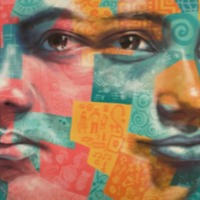
Grace
There are an estimated 136,000 people living on conditions of modern slavery in the United Kingdom (Global Slavery Index 2018). According to the 2017 annual figures provided by the National Crime Agency, 5, 145 potential victims of modern slavery were referred through the National Referral Mechanism in 2017, of whom 2,454 were female, 2688 were male and 3 were transgender, with 41% of all referrals being children at the time of exploitation. People are subjected to slavery in the UK in the form of domestic servitude, labour exploitation, organ harvesting and sexual exploitation, with the largest number of potential victims originating from Albania, China, Vietnam and Nigeria. This data however does not consider the unknown numbers of victims that are not reported. Grace was trafficked from Nigeria to the UK into forced prostitution by a local woman who used the traditional African belief of Juju to threaten her. Eventually she escaped and told the police what happened but her trafficker and the woman that sold her fled the UK.
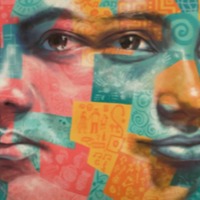
Robin Flemming
There are an estimated 403,000 people living in modern slavery in the United States (GSI 2018). Sex trafficking exists throughout the country. Traffickers use violence, threats, lies, debt bondage and other forms of coercion to compel adults and children to engage in commercial sex acts against their will. The situations that sex trafficking victims face vary, many victims become romantically involved with someone who then forces them into prostitution. Others are lured with false promises of a job, and some are forced to sell sex by members of their own families. Victims of sex trafficking include both foreign nationals and US citizens, with women making up the majority of those trafficked for the purposes of commercial sexual exploitation. In 2015, the most reported venues/industries for sex trafficking included commercial-front brothels, hotel/motel-based trafficking, online advertisements with unknown locations, residential brothels, and street-based sex trafficking. Robin Flemming was 20 years old when she met a man who seemed like everything she was looking for. He was loving, caring and promised her the world. It wasn’t until she moved to Texas to live with him that he began using her for profit. Flemming’s trafficker, whom she now refers to as “the monster,” brought her to a club one day and told her she was going to audition to be a dancer. During her first night of dancing, she earned $3,000. Throughout their marriage, they moved across the country and lived in more than six states. Flemming said her trafficker abused her verbally and mentally, raped her numerous times and occasionally kicked out of her home, leaving her with no place to go. After secretly stashing money at work, Flemming raised about $10,000, which she used to escape from her trafficker. She went to work one day and decided that she would not come back. It wasn't until two and a half years later that her trafficker finally started leaving her alone. Flemming was able to divorce her trafficker in 2007, a year after she saw him for the last time. She then had to work to get her life back to normal. Flemming stayed in exotic dancing for six more years. After counseling, continuous nightmares and a year of being sober, her life has returned to normal. She now lives in Columbia with her husband and daughter and runs a day-care. She is currently trying to repair her relationship with her other daughter, who also lives in Columbia and is married.
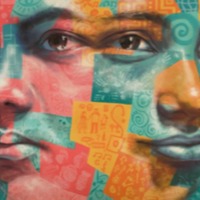
Tina B
There are an estimated 403,000 people living in modern slavery in the United States (GSI 2018). Sex trafficking exists throughout the country. Traffickers use violence, threats, lies, debt bondage and other forms of coercion to compel adults and children to engage in commercial sex acts against their will. The situations that sex trafficking victims face vary, many victims become romantically involved with someone who then forces them into prostitution. Others are lured with false promises of a job, and some are forced to sell sex by members of their own families. Victims of sex trafficking include both foreign nationals and US citizens, with women making up the majority of those trafficked for the purposes of commercial sexual exploitation. In 2015, the most reported venues/industries for sex trafficking included commercial-front brothels, hotel/motel-based trafficking, online advertisements with unknown locations, residential brothels, and street-based sex trafficking. Tina was trafficked into commercial sexual exploitation in the state of Nebraska. Here she talks about the role that drugs play in trafficking women in the state, and how their lives are affected even after they have escaped.
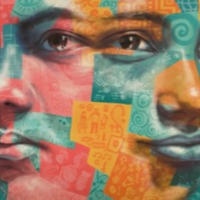
Jenny B
There are an estimated 403,000 people living in modern slavery in the United States (GSI 2018). Sex trafficking exists throughout the country. Traffickers use violence, threats, lies, debt bondage and other forms of coercion to compel adults and children to engage in commercial sex acts against their will. The situations that sex trafficking victims face vary, many victims become romantically involved with someone who then forces them into prostitution. Others are lured with false promises of a job, and some are forced to sell sex by members of their own families. Victims of sex trafficking include both foreign nationals and US citizens, with women making up the majority of those trafficked for the purposes of commercial sexual exploitation. In 2015, the most reported venues/industries for sex trafficking included commercial-front brothels, hotel/motel-based trafficking, online advertisements with unknown locations, residential brothels, and street-based sex trafficking. Jenny was trafficked into forced prostitution in the state of Nebraska. Here she draws on her experience to suggest ways to improve support for women after they have escaped their trafficker. She highlights the importance of raising awareness and access to counselling, not just for the person trafficked but those close to them.
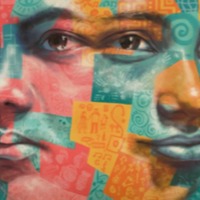
Noel Gomez
There are an estimated 403,000 people living in modern slavery in the United States (GSI 2018). Sex trafficking exists throughout the country. Traffickers use violence, threats, lies, debt bondage and other forms of coercion to compel adults and children to engage in commercial sex acts against their will. The situations that sex trafficking victims face vary, many victims become romantically involved with someone who then forces them into prostitution. Others are lured with false promises of a job, and some are forced to sell sex by members of their own families. Victims of sex trafficking include both foreign nationals and US citizens, with women making up the majority of those trafficked for the purposes of commercial sexual exploitation. In 2015, the most reported venues/industries for sex trafficking included commercial-front brothels, hotel/motel-based trafficking, online advertisements with unknown locations, residential brothels, and street-based sex trafficking. Noel was coerced into becoming a prostitute in Seattle when she was 16. She spent 15 years in the life, trying to escape numerous times and being subjected to physical and sexual abuse on a daily basis. When she was finally able to escape, Noel managed to get a job, a degree and founded her own organisation to help other women and girls subjected to forced sexual exploitation in the city.